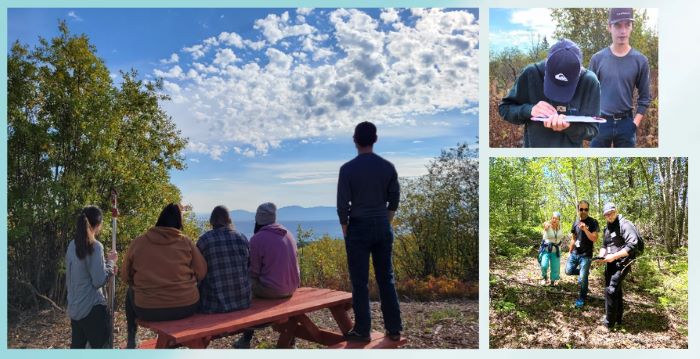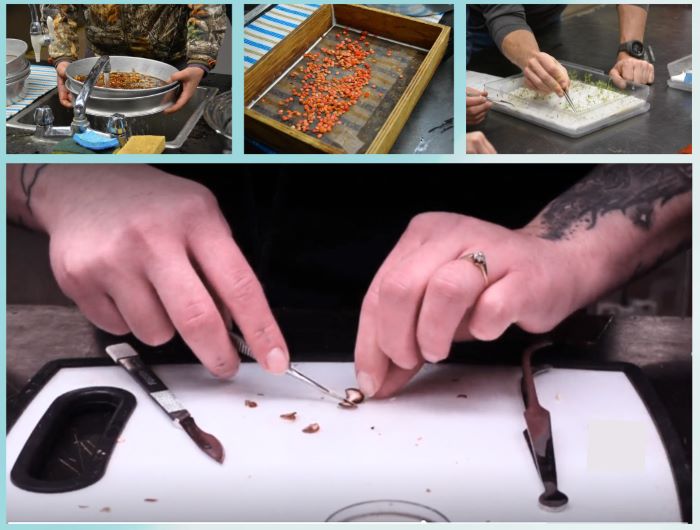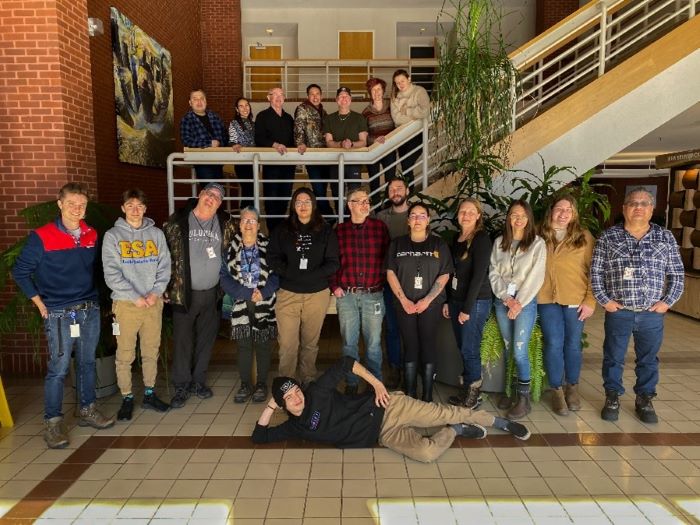The Indigenous Seed Collection Program, part of the Canadian Forest Service, is helping plant the forests of the future by sowing traditional knowledge, one seed at a time. Find out how a program that started with Mi’kmaq communities in Atlantic Canada has quickly developed into a popular and diverse Indigenous-led network of knowledge sharing.
June 2023
By Gillian Aylward
Seed collection is an important piece of forest conservation. As climate change continues to threaten the well-being of our forests, incorporating Indigenous knowledge at all stages of conservation is crucial. Healthy forests help preserve biodiversity, water resources, and they have an especially important role in capturing and storing carbon. Trees are a fundamental part of protecting the future of our forests.
Donnie McPhee as he began his trip across Canada for the Indigenous Seed Collection Program in 2022.
Donnie McPhee, a CFS forestry officer and National Tree Seed Centre (NTSC) coordinator, regularly travels across Canada working with communities and incorporating Indigenous knowledge with western science in the field of tree and shrub seed collection.
“In these field training sessions, we look at how and when to collect seeds, how much seed should be collected, where do you collect it from and from how many trees in a given area,” says Donnie. “And once you collect the seed, what do you have to do to ensure it stays healthy, so it can be stored long term.”
The Indigenous Seed Collection Program (ISCP) continues to evolve and is being tweaked as new Indigenous knowledge is shared. “It’s only via working side by side with a wide range of communities from all across the country that we will get where we need to go,” adds Donnie.

“Seed collection helps preserve not only flora species, but also the language and culture our Indigenous partners.” Mary Knockwood, CFS Indigenous programs coordinator. (Photos: NTSC)
The big picture
Indigenous Peoples have long been leaders of seed collection as part of their long tradition of protecting and preserving the physical and natural environment. Indigenous worldviews are holistic: trees are just one part of Mother Earth’s living ecosystem. As a result, by collecting and preserving tree seeds the ISCP’s work has the wider effect of also protecting the animals, plants and other living beings that depend upon trees for survival and well-being.
“Seed collection is as important for our forest as it is important to the future of Mother Earth and all the creatures living upon her,” says Mary Knockwood, a CFS Indigenous programs coordinator. “It helps in preserving not only flora species but also the language, culture and traditions of our Indigenous partners.”

Indigenous communities throughout Canada take part in the program. (Photos: NTSC)
It’s this big picture — protecting seeds and preserving culture — that’s at the heart of the program. Led by Indigenous communities across the country, the grassroots program is collecting and storing tree seeds that not only have general commercial and ecological value but also have significant cultural, spiritual, medicinal and economic importance to the Indigenous communities that gather them.
The ISCP is part of the Canadian Forest Service’s National Tree Seed Centre in Fredericton, New Brunswick. It’s the country’s only national seed bank helping to preserve the diversity of our forests in case of fire, drought or deforestation.
Indigenous-led network of knowledge sharing
The program first began with Mi’kmaq communities in Atlantic Canada, and as word about it spread, so did community interest. Today, Indigenous communities throughout the country are taking part.

The Indigenous Seed Collection Program in Fredericton, New Brunswick. (Photos: NTSC)
More than serving as a simple tree-seed storehouse, the Indigenous Seed Collection Program is a service centre, implementing what the communities want, not the other way around. “At its core, the ISCP is a mutual network of knowledge sharing among Indigenous communities from coast to coast to coast,” Donnie explains. “Different communities are working together and building a network, giving value to what they’re protecting.”
Two-Eyed Seeing
Since Indigenous Peoples are the earliest seed collectors in North America and we all share responsibility for protecting the land and its natural resources, the concept of Two-Eyed Seeing expressed by Mi’kmaq Elder Albert Marshall is of fundamental value to the program:
Two-Eyed Seeing refers to learning to see from one eye with the strengths of Indigenous ways of knowing and from the other eye with the strengths of western ways of knowing, and to using both of these eyes together.
This approach has a strong practical element that underlies and defines the program. “Two-Eyed Seeing is forging or bringing together two ways of doing,” Mary says. “Indigenous Peoples have been collecting, storing and using seed for all time. Our staff are learning from that knowledge and incorporating western science into those practices. At the same time, Indigenous partners are now weaving western science into the ways they collect and store to strengthen their processes. And this strengthening in turn increases the length of time for storage and the viability of seed. The Indigenous Seed Collection Program is creating the space for Two-Eyed Seeing to flourish.”
The ISCP is an excellent example of how easily and effectively Two-Eyed Seeing can be applied. While seed collection at the NTSC had previously been narrowly focused on economically beneficial or at-risk tree species, the ISCP now ensures that a wider range of trees — those with cultural, spiritual and medicinal importance to Indigenous communities — are also being protected.
Planting for the future
This work is clearly important with long-term benefits in the fight against climate change and to help preserve cultural traditions. Ongoing partnerships between the ISCP and Indigenous communities are key to the program’s continued success. “The ISCP requires support at all levels to ensure we can continue offering training and the ability to process and store their seeds when asked,” Mary says.
Like a tree seed itself, this one-of-a-kind program depends upon a supportive environment in order to thrive and flourish.

Group attending ISCP training session in New Brunswick.
Discover more:
Indigenous Seed Collection Program
Seeds that succeed (Simply Science article)
Saving our ash trees (Simply Science podcast)